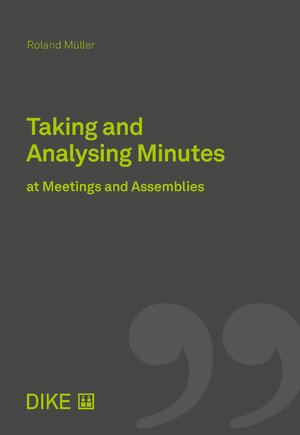
×
![Buchcover ISBN 9783038916680]()
Taking and Evaluating Minutes at Meetings and Assemblies
von Roland MüllerArtificial intelligence makes the transcription of events like meetings and assemblies easier. However, no currently available software can correctly decide which statements are significant and which are not. The summaries generated by AI software of discussions and deliberations can therefore only partially fulfil the requirements of the Business Judgement Rule. The storage of sensitive recordings in the cloud is also a major security concern for many companies. Similarly, audiovisual recordings cannot in most cases fulfil the legal requirements - such recordings can only support the taking of minutes. The task of taking minutes therefore remains very challenging and important.
Minutes are of particular importance in criminal and civil proceedings. According to the Business Judgement Rule, only if the minutes record in detail the initial situation, the available information, and the consideration of options based on which a resolution or decision was reached can strategic or executive bodies exonerate themselves in cases of a wrong decision. The less that is written in the minutes, the more difficult it is to prove that a decision was properly taken.
The requirements for minutes and for the minute-taker are extensive and vary depending on the purpose of the minutes. A lot is said at meetings or assemblies and the statements are often accompanied by strong emotions. Nevertheless, minutes should only contain essential material and should always be written objectively, comprehensibly, and truthfully. Minute-takers are therefore entrusted with a demanding task.
This first edition is in accordance with current legislation, case law, and legal literature. The book is intended to help optimise the taking and evaluation of minutes in private and public companies, institutions, and other administrative bodies. With the additional 21 samples and checklists and the detailed subject index, the book is not only suitable for self-study but may also serve as a teaching aid in relevant courses. The book is already being used successfully in the Swiss Board School of the Board Foundation in its board of directors and secretarial courses



